Here is a complete guide to know the entire history of Thassos.
So if you want to learn:
- How old is the ancient agora of Thasos
- Why Thassians are actually from Paros
- What was life under Roman rule
Then, you’ll love this complete guide to the fascinating history of Thasos island!
Let’s get started
In a rush? Want to download this article as a PDF so you can easily refer to it later? Click here to download this article as a PDF guide.

Infographic
Feel free to share on social ; )
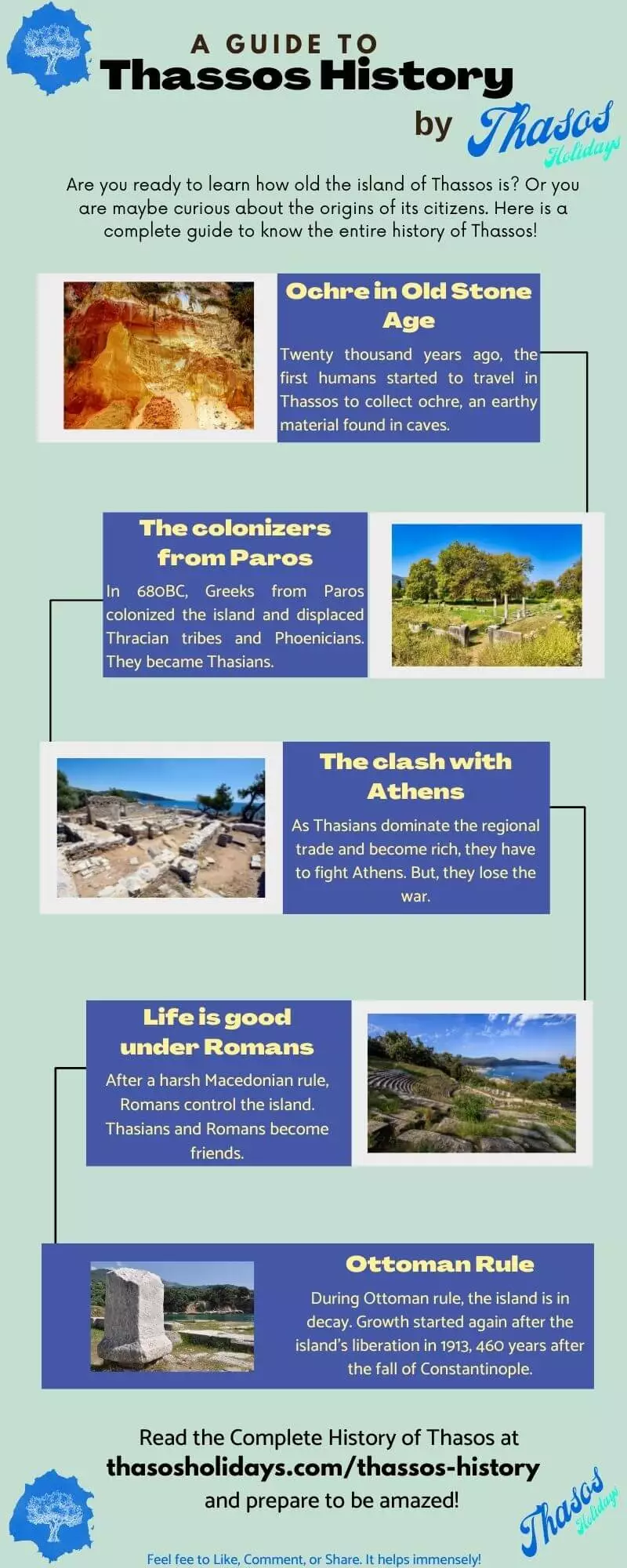
Chapter 1: Quick summary and timeline
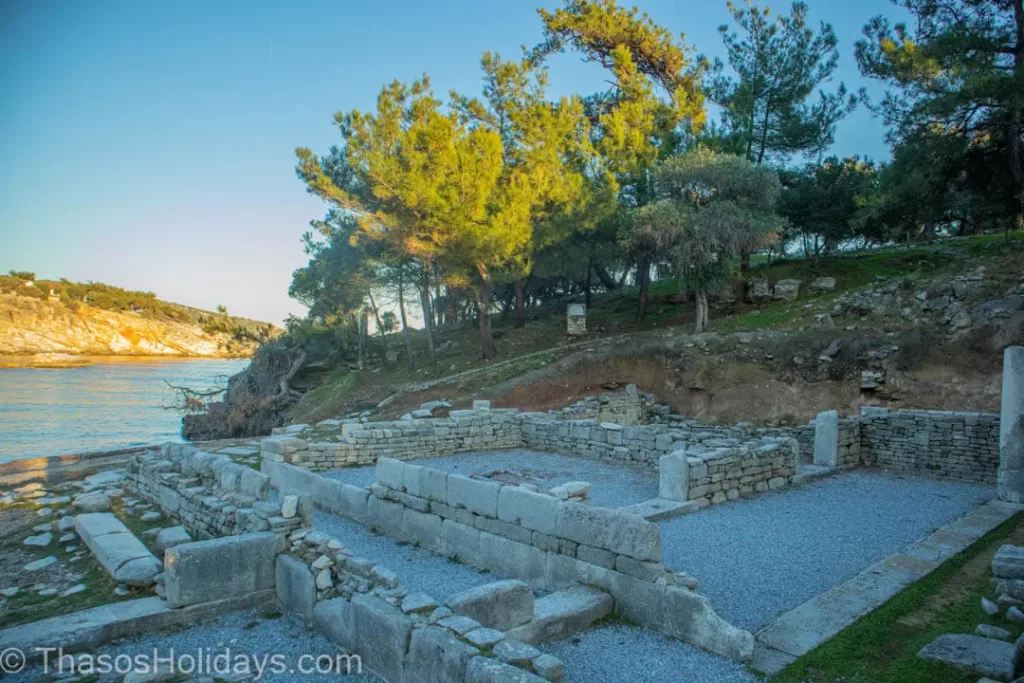
The Start
The history of Thassos starts about twenty thousand years ago when our predecessors traveled here to collect from local caves an earth material called ocher. One such cave is Tzines which you can still visit today.
Note there was no such thing as the island of Thassos at the time; everything was one with the mainland. Around 10,000BC, an earthquake separated the island from the mainland.
As the Stone Age was coming to its later years, the first settlements appeared in the regions known today as Limenaria and Skala Sotiros. Remember, the ground morphology was very different at the time, with the main difference being that the seashore was further away.
As the Stone Age gave way to the Copper Age, more settlements started to form in Kastri, Ai-Lia in Theologos, Limenas, and caves around the island. Then, in 680BC, a pivotal year for Thassos history, citizens of Paros settled on the island.
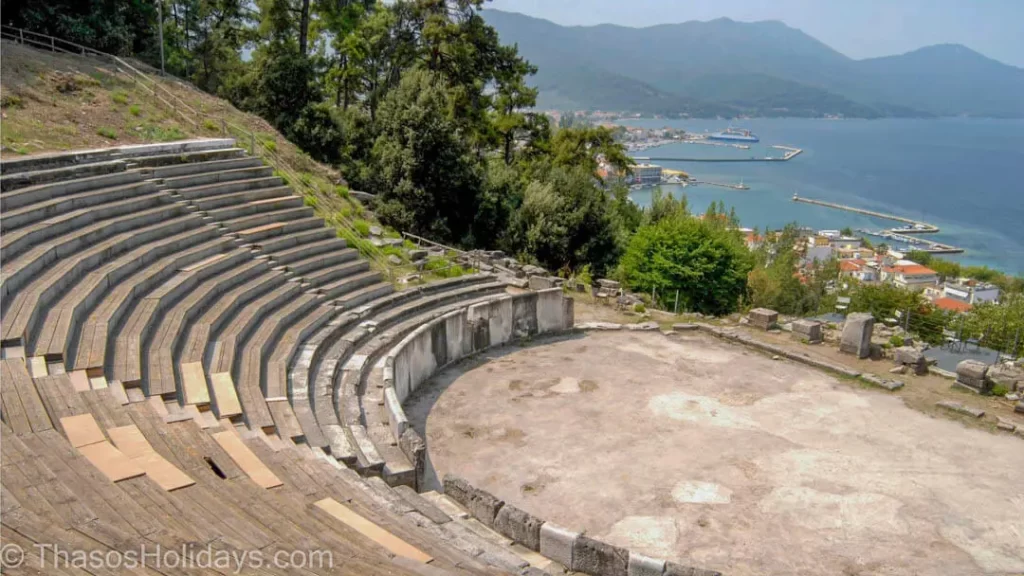
The Growth
With Parians as the dominant population group, Thassos Island became a regional power thanks to its imposing fleet and the growth of trade that the ships allowed.
However, the rising aspiration and dominance of Thassians in important trade points in the mainland led to the inevitable conflict with the leading city-state in Greece: Athens. The result? The Athenians sink the Thassian fleet, and the island becomes a protectorate of Athens.
After the Athenians, the island’s dominion passes to Macedonias, who the locals despise because of their harsh rule. The locals’ hatred is so intense that Thassians see the Romans as liberators. Speaking of locals, don’t be afraid to chat with the locals!
During Roman rule, the island is peaceful and enjoys unparalleled growth and prosperity. Thassians consider Romans as friends and even build monuments in their honor.
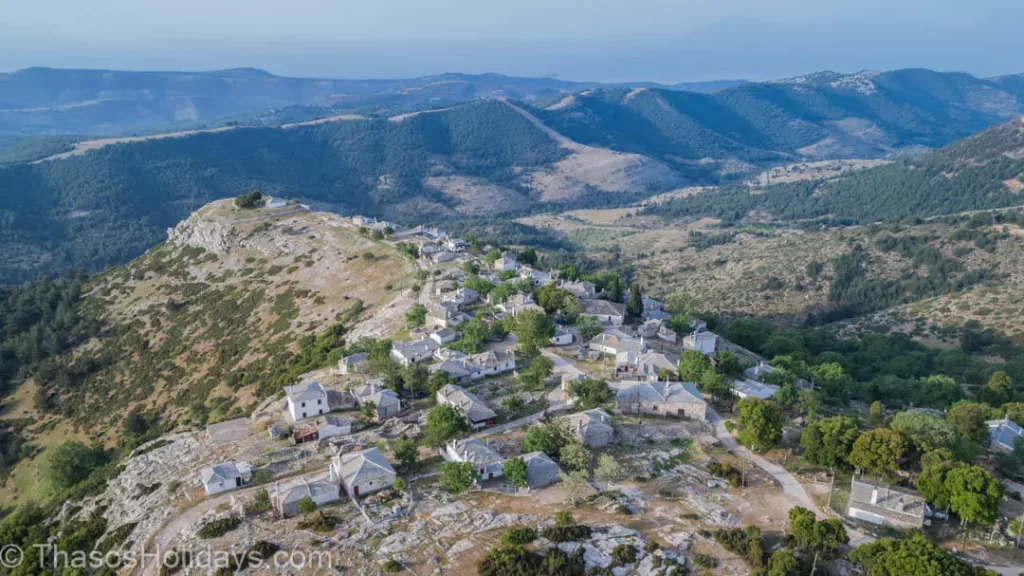
The End
After the Roman Empire splits into two, Thassos falls under Byzantine rule. During that time, the island loses its glamor and declines due to constant raids and invasions from hostile forces and pirates alike.
The decay continues under Ottoman rule, during which the island faces more piracy raids and two major migration crises.
With the emergence of the Greek state in the 19th century, Thassians aspire to join their fellow brothers. After an initial setback and a massacre of 1000 Thassians, the island gains its independence in 1913. Almost 500 years since the fall of Constantinople!
Does the story of Thassos sound interesting? Let’s dive deeper and see everything in more detail. And I promise you: you will never see the island the same way after reading this complete guide.
Chapter 2: The prehistoric times

Old Stone Age (20,000-10,000 BC)
It all started about 20 thousand years ago, in the southern part of Thassos.
Ancient humans looked for ochre, an earthly material usually used as adhesive or pigment. And south Thassos was full of it. Particularly the area between today’s Maries and Limenaria.
But let’s take a step back. Where are those people coming from?
Although the evidence is limiting, archaeologists assume that Thracian tribes traveled to Thasos for its ochre between 20.000 and 10.000 BC. These tribes used the ocher to paint various items, including their bodies, during religious celebrities.
They even used ocher to create cave art, which is why we are aware of their presence in the area.
If you wonder if these people were living in Thasos, they were not. But nor did they live somewhere specifically. After all, during the Old Stone Age, humans were nomads, traveling from one place to another non-stop. And Thassos was nothing but a stopover in their never-ending travels.

New Stone Age (10,000–4,500 BC)
Around 10,000 BC, when an earthquake separated Thasos from the mainland, humans started to move permanently in one place. That was the end of nomadic life and the start of a new era.
There is evidence of two main settlements in Thassos during that era. The most important was Limenaria, whose remnants reside below today’s village. Limenaria was further away from the sea at the time, standing on top of a hill.
Near the settlement, there was an arable valley with a water source that explains why the ancient Thasians chose that location. Agriculture and fishing were the primary food sources, although wild fruits were also common.
A few kilometers East of Limenaria, Kastri was another significant settlement. Do not confuse that with modern Kastro, which was a medieval castle.
This mountain settlement offered greater protection to its citizens but was far from arable land. As a result, locals moved to stock-raising sheep and goats.
Locals also used the nearby marble sources to build their houses. Of course, they also used wood and clay.
What is more, the settlements of Kastri and Limenaria show signs of an organized society with a centralized authority. However, there are also signs of independent residences. For example, caves in Skala Maries and Drakotripa Panagias once were homes for man in the New Stone Age.
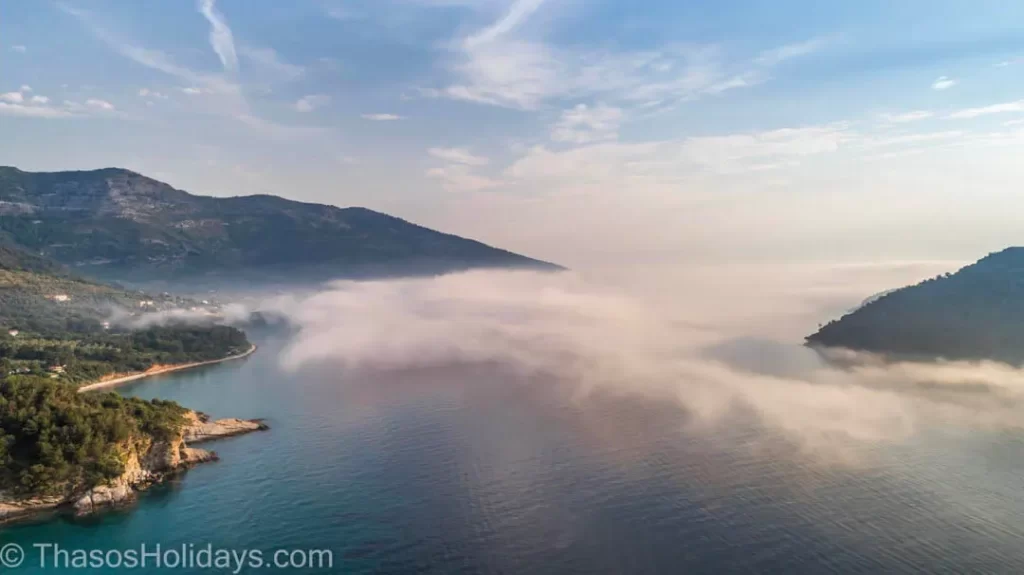
Copper Age (4,500-1350 BC)
As locals use less stone and more copper, some settlements prevail, and others become desolate. Drakotripa and Limenaria are two that remain. Not only that, but in Limenaria, coppery thrives and becomes a significant profession for many, especially with the rise of trade.
Apart from the older settlements, new ones start to form. The most important becomes Skala Sotiros, now buried below the modern village.
Most of the remnants are below the hill, where you can find today’s church of Profiti Ilias. Here, you can also spot the old stone wall that encircled Skala Sotiros.
(PS. If you love what you see, check this guide on Thassos churches!)
Archeologists also claim that seaside Drakotripa in Panagia and Agios Antonios in Potos were thriving settlements during the Copper Age. However, during the end of the era, locals start to move away from valleys towards more mountainous terrain.
A reason for this migration might have been the rise of piracy in the Aegean waters of the time. As a result, settlements like Limenaria slowly became desolate while Kastri became an active society again.
Close to Kastri and near modern Theologos, there are signs of a walled settlement around the hill of Ai-Lia. You can see the ruins even today.
What is more, although some archaeologists disagree, Limenas might have seen its first residents near today’s Acropolis.
You can still witness important monuments of the time in the archaeological museum of Thassos.
Speaking of the museum, visiting the archaeological museum of Thassos on a hike should be part of your Thassos plans. By the way, if you haven’t decided on your Thassos itinerary yet, check one of my suggested itineraries for your Thassos holidays: a 7-day itinerary, a 5-day itinerary, or a shorter 4-day itinerary.
Chapter 3: Thracians or Phoenicians

Who were ancient Thassians?
Although we have more and more evidence from the prehistoric history of Thassos, there is one question that remains unanswered. Who were the first Thassians before Parians colonized the island in 680 BC?
There are two candidates. Ancient Thassians were either Thracians or Phoenicians.

The Dispute
Although there is an interesting mythological story about Thasians and Phoenicians, the historical data are restricting. According to Herodotus, Phoenicians were the first to exploit the island’s gold mines. However, the date of their arrival is not certain.
Some archaeologists claim that Phoenicians were probably traders who came to Thassos for its gold but did not settle there. At least not permanently. Again, there is no conclusive evidence on the matter.
If it wasn’t Phoenicians, then it should be Thracians. Again, the evidence here is inconclusive. And because Ancient Greeks used the terms Barbarians and Thracians interchangeably, the written texts often generate more confusion than clarity.

What we know
In one source from ancient historian Skymnos, the residents of Thasos came with the name Barbarians, but they were separate from Thracians who lived in the mainland. Note that Barbarians was a term frequently used at the time to refer to non-Greeks.
No matter what the truth is, today’s Thassians trace their ancestry to neither. And that is because of the Parian colonization in the 8th century BC.
Chapter 4: The Parian colonization in the 7th century BC

The new resident of Thassos
In 680BC, the first colonizers from the island of Paros reach Thassos. They settle in today’s Acropolis of Limenas, which you can visit even today. There, they build the foundation for a bright future and turn Thassos to one of the most important Greek islands of the time.
The Parians choose Limenas for its premium location and natural harbor. The marble sources nearby provide the necessary material to build their houses, the ancient agora of Thasos, and a great wall to protect the new city.
According to tradition, a saying from the oracle of Delphi encouraged the Parians to build a colony in Thassos. There, a new city would be visible from all directions and was to play an essential role in the centuries to come.

The fight with the locals
As you can imagine, the new colony in Thassos did not find a friendly welcome from the locals. Ancient Thasians fought with Parians but lost the war and migrated to the mainland.
After the second wave of Parian colonizers around 650 BC, the island also became a target citizens of Naxos who wanted to build their own colony there. In a matter of unparalleled ingenuity, the Parians agreed to welcome back the ancient Thasians to the island. In return, they would help in the fight against the Naxians.
And everything turned out great for Parians. Ancient Thasians prevented the Naxians from settling on the island, but they suffered immense casualties in the process. As a result, their numbers became too small to pose any threat to Parians, the new residents of Thasos.

Thasos becomes a regional power
Once the new Thassians secure their position on the island, they look beyond that. They understand that the way to power is trade. And for that reason, they need a holding to the mainland to secure access to the area’s rich resources.
After decades of successful wars, they even reach the interior of Visaltia, which they access from the river of Strimona. Thasians now form new colonies, such as Neapolis and Galipsos.
To boost their income from trade, Thasians also build trade stations and outreaches throughout Thrace. That helps them become the most influential power in the region.
What is more, the efforts from Thasians contributed to the spread of Hellenism deep in the lands of Thrace.
One of the secrets of this success is no other than the powerful Thasian navy, with both commercial and warships. The accumulated power and wealth allow Thasians to build a strong 4-kilometer-long wall around 500 BC. You can still see its foundations near Acropolis today.
Chapter 5: The struggle with Athens

The reasons behind the conflict in the 5th century BC
Like every rising power, Thasos comes in a clash with the existing authority in the region. And in the case of Thassians, that is Athens.
Apart from the conflicting trade interests, there is a more fundamental reason behind the hatred of ancient Athenians towards Thassos. Persians!
During the great Persian to Greece in 491 BC, Thasos had no choice but to befriend the enemies of the Greek states. There was no hope of standing the ground against such an enormous enemy. As a result, they provided food and shelter to the Persians.
Yet, when the Persian king Darius saw the tall walls of Thassos, he ordered the locals to tear down the walls. If that was not enough, he demanded both a vassal tax and ships for his fleet.
After the defeat of the Persians in 478 BC, Athens slowly becomes the most dominant force in Greece. To secure its position, Athens creates a confederation of Greek cities.
Although an alliance between equals, Athens becomes the coalition’s de facto leader. Thasos becomes a confederation member and must contribute ships and coins to Athens every year.
The motivation behind Thasos entering the confederation lies in trade. They believe an alliance with the Athenians will help them maintain their trade rights in northern Greece and Thrace.
However, before they know it, Athens builds a trade center close to modern Amphipolis, a prominent trade corridor in the region. As a result, Thassos loses the hard-earned trade rights in the North. Conflict is inevitable.
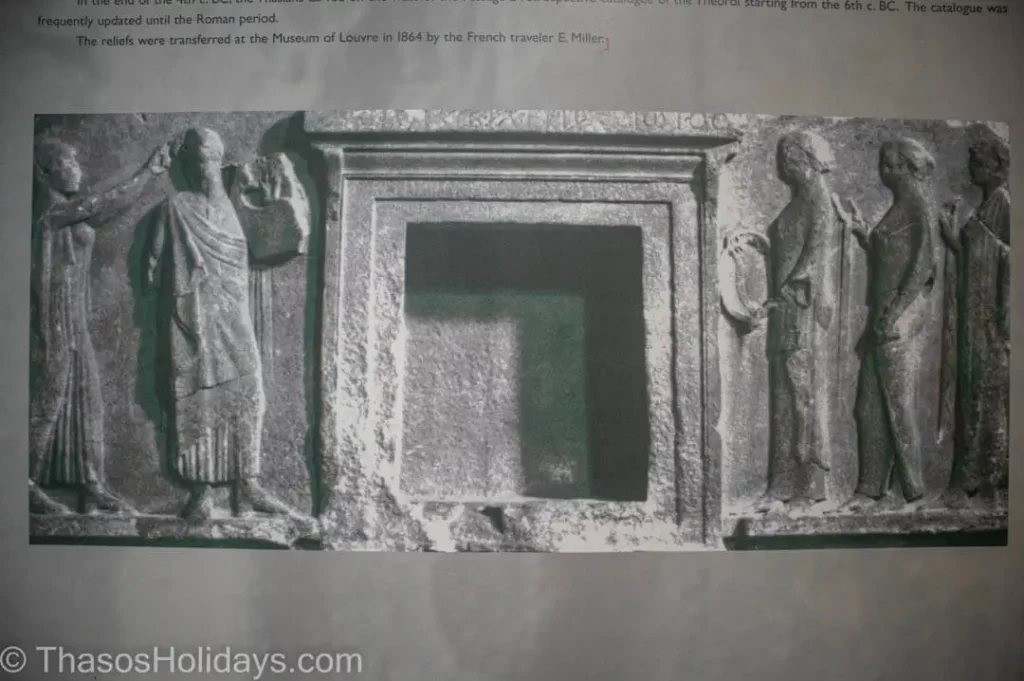
The defeat of Thassos
In the spring of 465 BC, Thassians have no choice but to rebel, knowing very well what awaits them. And it turns out it is worse than they hoped. The Athenians respond with a quick and decisive move.
A powerful Athenian fleet reaches Thassos, destroys the local fleet occupying 33 ships, and starts a siege to the city. Although Thasians rebuilt their walls, these were not enough to stop them from the Athenian wrath. They are hoping for Spartans to turn up and help.
However, the promised help from Sparta never comes, and Thassos has to surrender in 462, almost three years after the siege. The terms of submission are humiliating.
Thasos has to tear down its walls once more, surrender all its ships to Athens, cover the entire financial expenses of the Athenian campaign to Thasos, and give up their mines in mainland Greece. What is more, they have to annualy pay heavy taxes of submission to Athens, outside their financial obligations towards the alliance.
The message of Athens is clear: no more thoughts of defections from the coalition. Thasos becomes an example of what will happen shall another Greek ally decides to defect.
After their devastating loss, Thasos turns from an influential coalition member to a second-class Greek city.
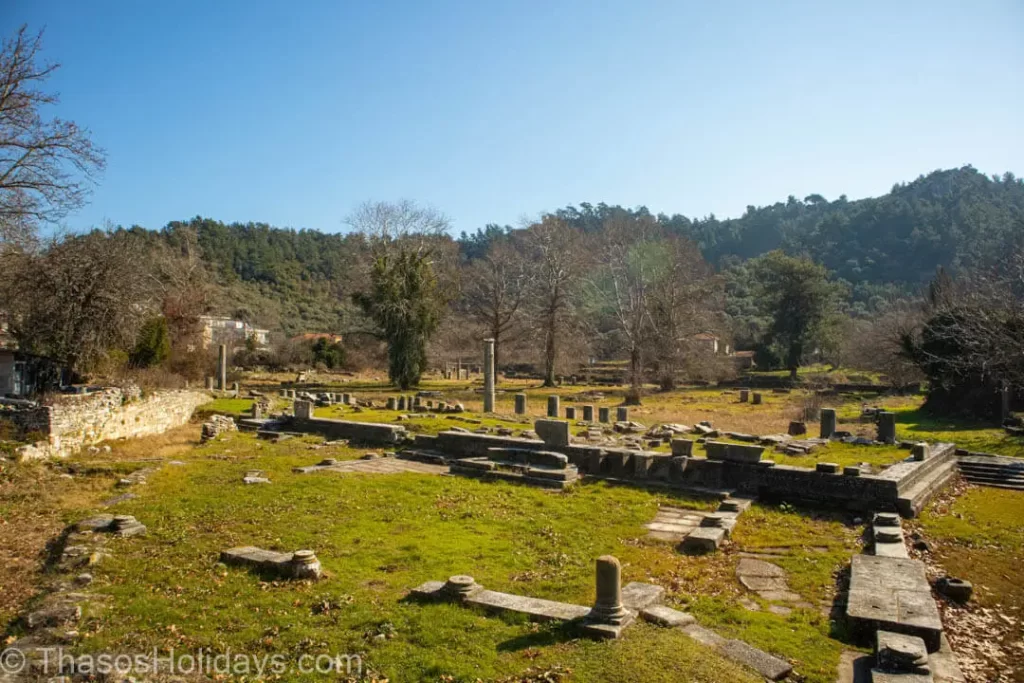
The unexpected turn of events
After a short period of growth between 446 and 411 BC, Thassos again has to face dramatic changes. Spartans attack the island as part of their war efforts against Athens and its allies. Spartans win and establish an oligarchy in 408 BC.
Nineteen years later, Athens manages to take back control of Thassos, establishing the first democracy on the island. And surprisingly, Athens becomes the reason Thassos becomes a dominant regional power again.
With the help of the Athenians, Thassians regain control of trade rights and mine exploitation in the mainland. An era of prosperity begins and lasts for about five decades.
The ancient agora of Thassos takes its final form; the walls get repaired, art blooms, and the renowned Thasian wine trades as far as the Black Sea. The economy is at its best.
And then, it isn’t. In 338 BC, Philip II and the Macedonians attack and occupy the island. Although Thasians take part in the campaigns of Alexander the Great in Persia, the Macedonian rule is strict.
In 281 BC, the Gauls defeat the Macedonians, but because they have no ships, Thassos gains its independence for 80 years. After that, Thassos again submits to the power of Macedonia in 202 BC.
Even though the Macedonian king promises not to harm Thassians if they surrender, many locals find unjust death in the hands of the king. And the hatred against the Macedonias grows ever larger.
Chapter 6: The Romans’ friendship
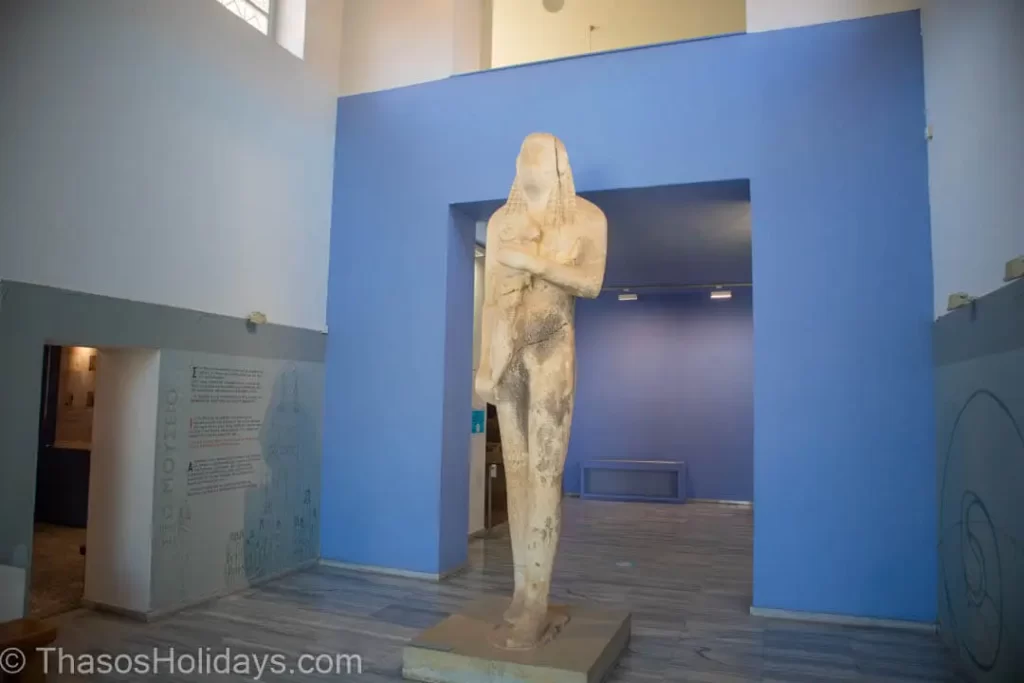
Prosperity under Roman Rule
After the strict Macedonian rule, Thassos comes under the control of Romans in 197 BC. Due to their hatred towards Macedonians, Thassians see the Romans as liberators. And this pays off!
With the help of Romans, the island gains significant autonomy in 80 BC and witnesses some of the most peaceful and prosperous years in its history.

Short period of turmoil during the Roman Civil War
The only outbreak of war happens in the initial stages of the Roman Empire, during the Roman civil war. Due to the presence of democrats in Greece, Thassos has to side with the side that eventually loses the fight.
When emperor Octavius wins the democratic army in 42 BC, the Romans embark on retaliatory measures against Thassos. However, they do not last long, and during his reign, Octavius returns the old privileges to Thasians.

The respect towards Romans
To understand how much Thassians respect Romans, know that even during the 1st century BC, the local lords and aristocracy use titles such as “friends of Caesar”. They even turned the ancient theatre of Thassos to an arena for gladiatorial battles.
And this diplomatic attitude towards the Roman superpower shows in the growth of Thasos infrastructure. Think of various Roman statues in the agora, monuments in honor of various emperors, the Roman theater in the 2nd century, and improvements in the port.
Romans even allow Thasians to create their own coin, a privilege that only Athenians share in Greece. It is no wonder Thasians become so rich under Roman rule.
Chapter 7: The decay under Byzantines rule

The End of Growth
Like in every happy story, this prosperous era of Thassos has to end at some point.
And as the Roman Empire splits into two the 4th century AD, Thassos comes under the rule of the Byzantines. And this also brings Christianity to the forefront.
Because of the intolerance of Christians towards ancient monuments, many statues, buildings, and books face destruction. In the place of ancient monuments, Thasians build new Christian ones.
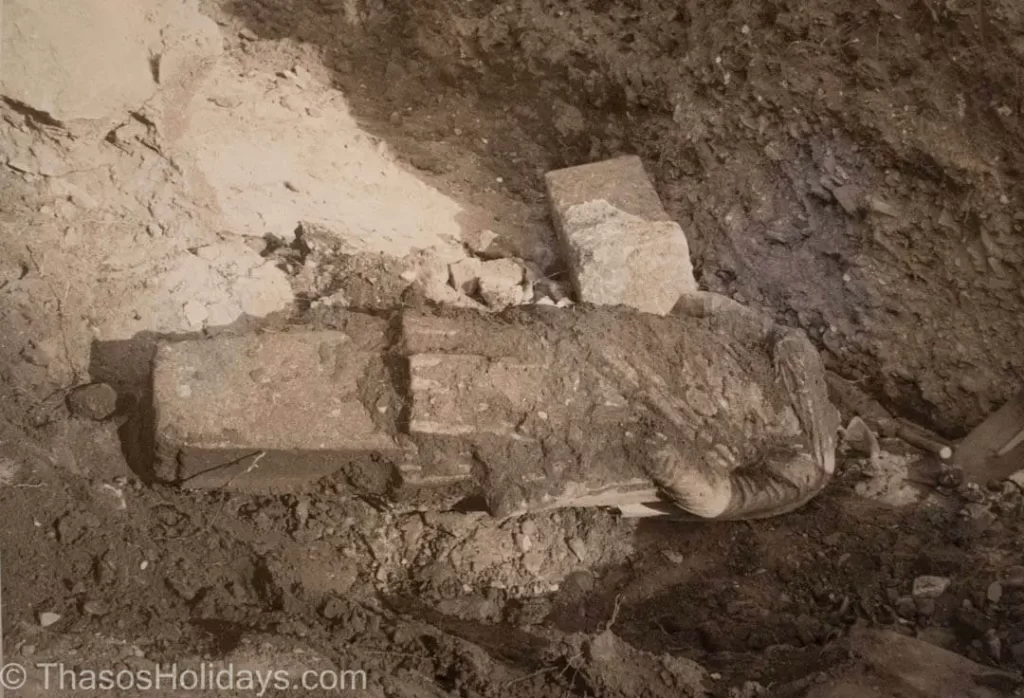
Endless raids and plunders
Although Thasos is at the heart of the Byzantine Empire, it has to face several invaders throughout the years.
Herulians in the 3rd century, Saracens in the 7th and 8th, Slavs in the 9th, and Arabs in the 10th raid and plunder the island, leaving total chaos behind. These raids almost destoryed the island, which is now to a turning point: the end of growth and the start of decay.
To give you an example, in 900, when the Saracens control the Aegean waters, they also occupy Thasos. And they exploit its rich forests to build new ships and help in the conquest of Thessaloniki.
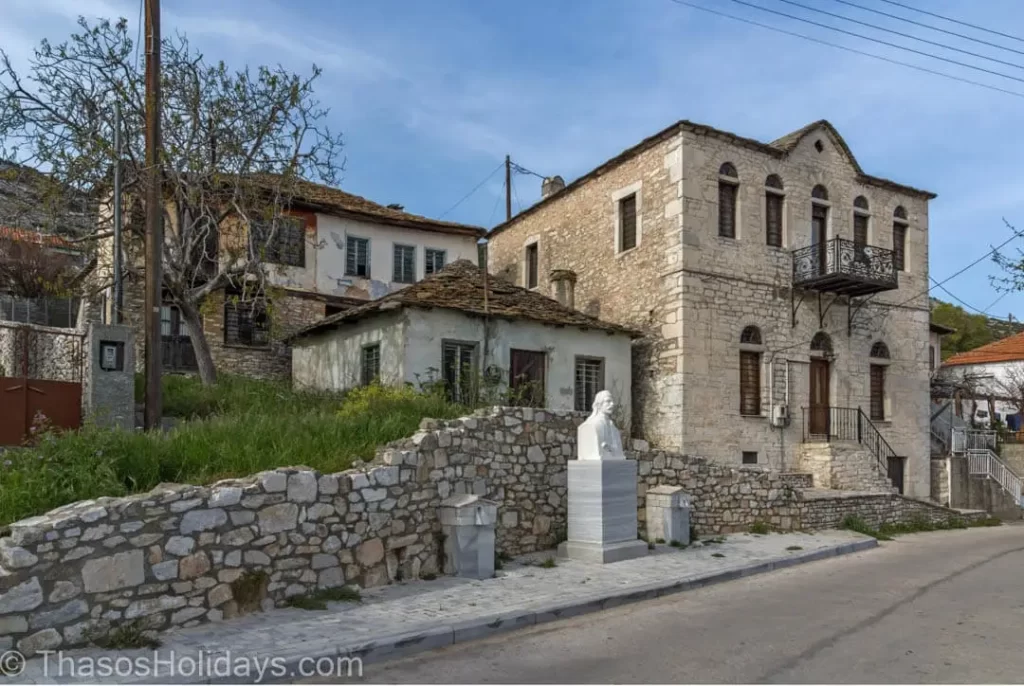
The constant change of power
With the first demise of the Byzantine empire in 1204, the Crusaders occupy and plunder Constantinople. As a result, Thassos comes under the reign of the Venetians.
Fifty-seven years later, Byzantines take back ownership of the island, but hardships do not end. Piracy is on its rise, and Thassians have to flee inland away from the seaside settlements to protect themselves.
After the Byzantine Emperor gifts the island to the Venetian family of Gattilisi in 1414 BC, Thassos becomes a prosperous trading center again. Moreover, the Venetians fortify the inland castle of Kastro while they also improve the fortification in the Acropolis.
However, this peaceful era only holds for 40 years. A new power looms over the Aegean and poses the ultimate existential threat to the Byzantine empire.
Chapter 8: The Ottoman occupation
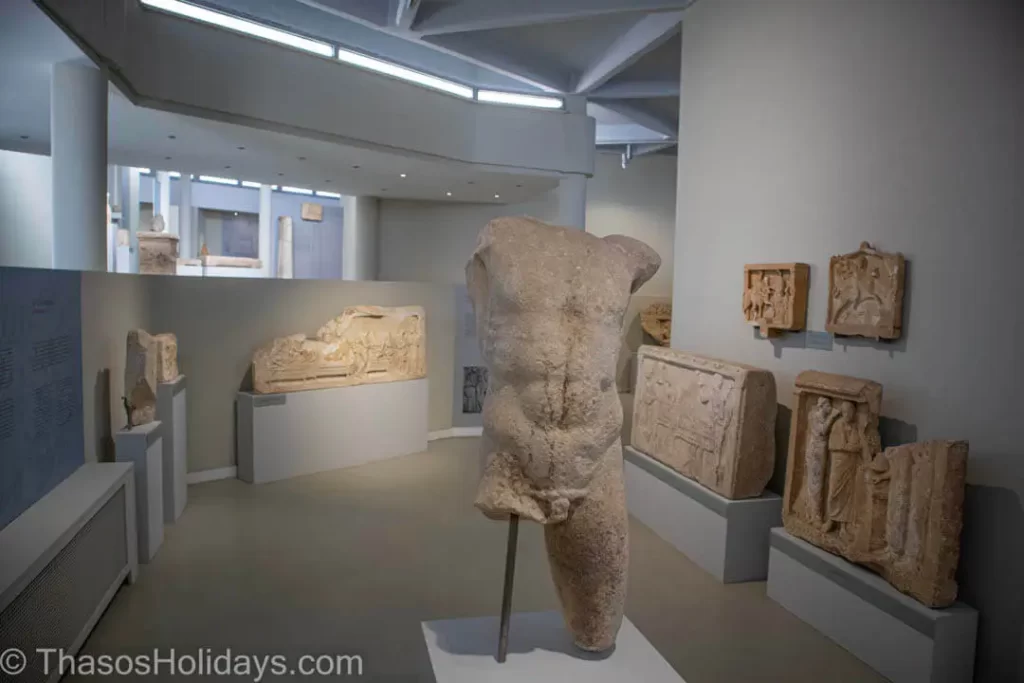
The turmoil after the fall of Constantinople
After the conquest of Constantinople in 1453, the island becomes Ottoman territory. Even though Venetians manage to take control of the island for two years in 1457, the Turks reconquer the island, and Thasos has to face one of the most challenging moments in its history.
Thassians are forced to leave the island and move to Istanbul, the new capital of the Ottoman Empire. In the next twenty-two years, Thasos constantly changes hands between the Ottomans, the Venetians, and the remnants of the Byzantine empire.

The Ottoman rule
toIn 1479, the Ottomans become the island’s de facto rulers for the next three centuries.
During this time, new Ottoman families arrive at the island and settle in Theologos and Tsigoura, today’s Megalo Kazaviti.
Greeks are frowned upon, but there are cases where locals and Turks mingle together and co-exist in peace.
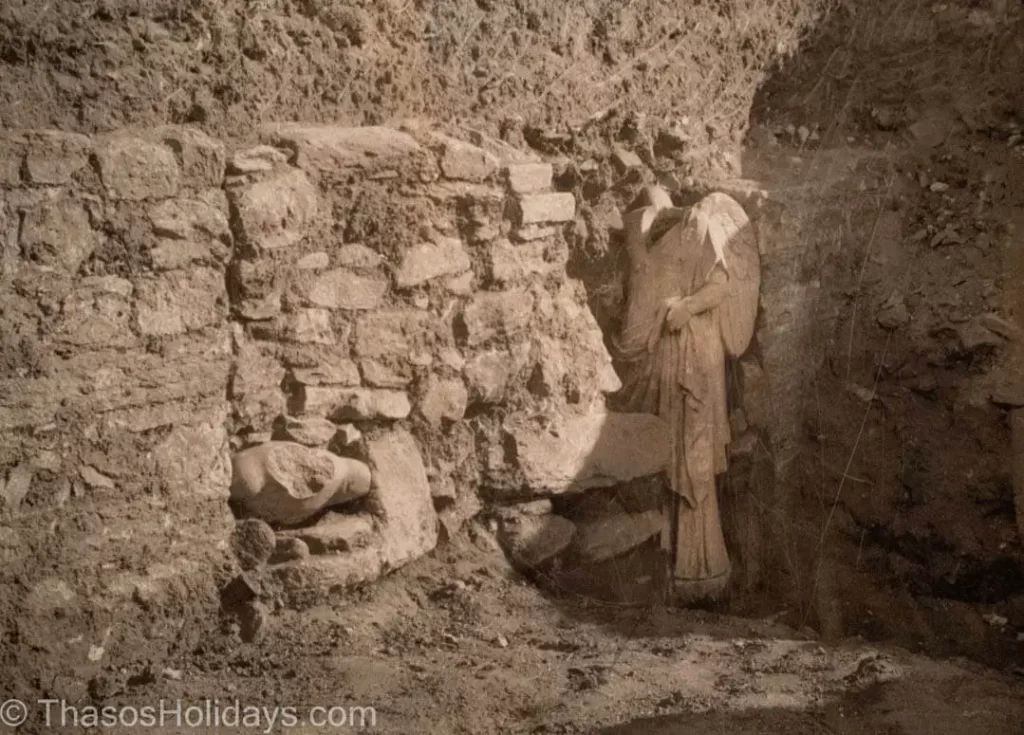
The Dark Century of Thassos
In the 17th century, the island becomes almost desolate as it becomes a target for pirates. Not only do Thassians have to defend against Muslim pirates from North Africa, but they also have to deal with the Christian crusaders-turned-to-pirates from Malta and other Christian settlements.
If that was not enough, Russians also shortly occupy the island in 1770 for four years.
To understand the impact of this century on the local population, look at the numbers. In 1707, explorer Branconnier mentions that Thassos has seven to eight thousand residents.
As you explore the island, you may wonder how they make such incredible houses and buildings. Look no further than our complete guide to Thassos Architecture.
At the end of the same century, French ambassador Cousinery notes that Thassos now has two thousand and five hundred citizens. Imagine how cruel that century could be for Thassians!
Chapter 9: The way to independence
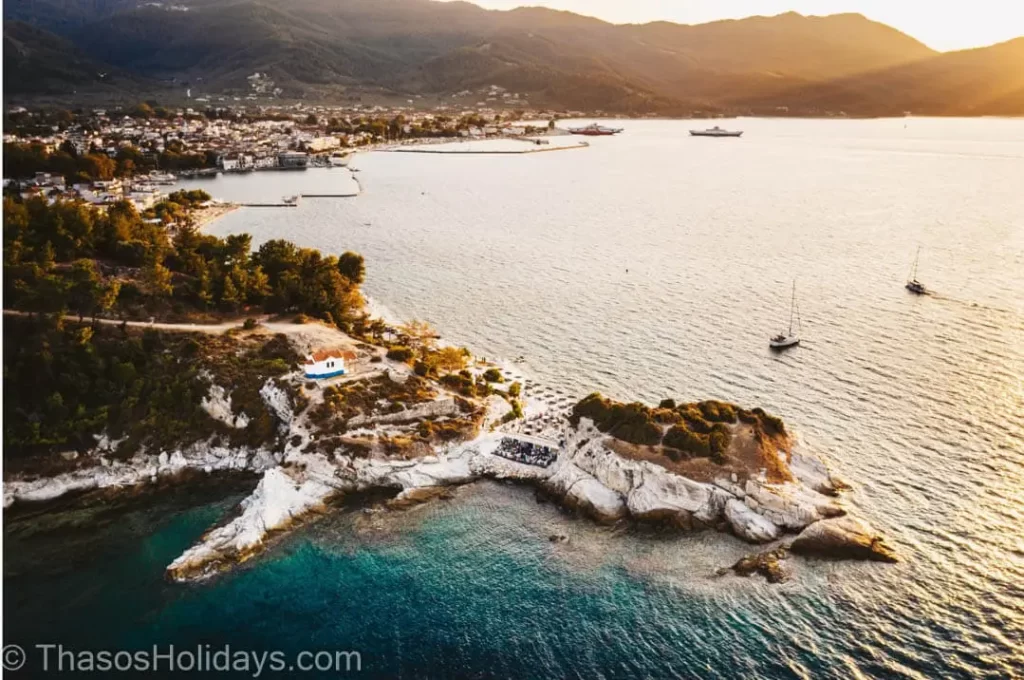
The First Attempt to Liberation
Despite their diminishing numbers, Thassians initially join the Greek Revolution and rebel against the local Turkish forces. However, the proximity to Constantinople means that the Turkish response is prompt and decisive.
As a retaliation toward the success of Greeks in Peloponnesus, the Turks persecute and kill 1000 Thassians. The island’s population gets even smaller.
Thassians have no option but to surrender at the end of 1821. On top of their loss, they now have to face the despair and anger of fellow Greeks. Fellow rebels from the island of Psara even raid the shores of Thassos in 1823.
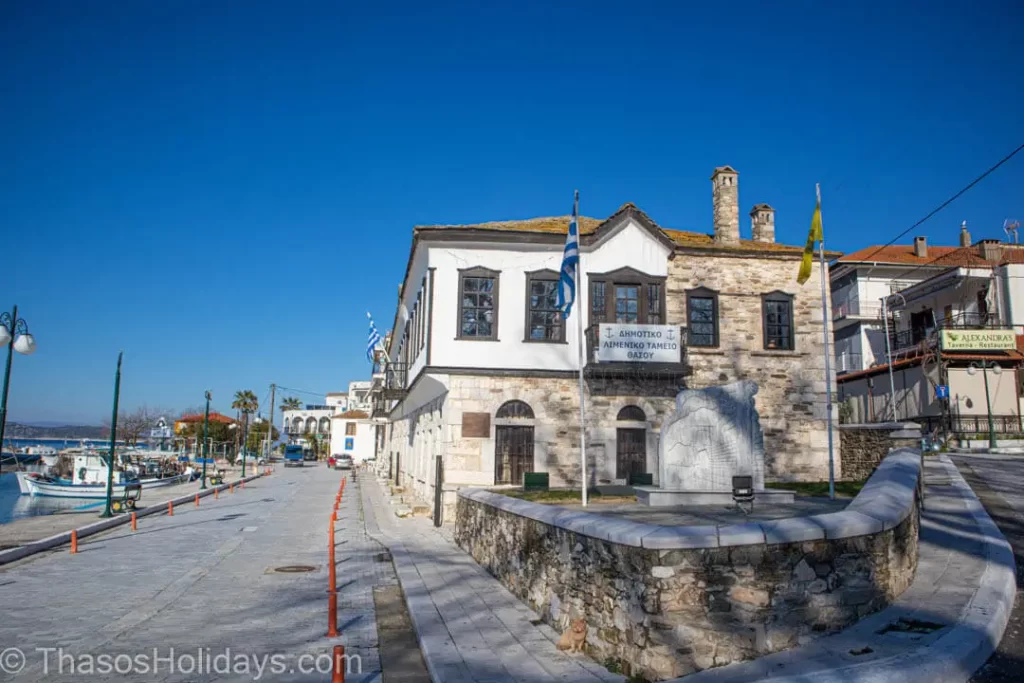
Life under the Egyptian rule
After the Greeks of the South gain independence and form the new Greek state, Thassos remains under the Ottoman influence for almost another century.
Note that already since 1813, Thassos has been in the hands of Egyptians. To be specific, after Mohammed Ali asks the sultan for ownership of the island, Thassos becomes an Egyptian protectorate.
Behind the desire of Mohammed to own Thassos lies his emotional attachment to the village of Rachoni, where he spent his summers growing up. During Egyptian rule, Thassos achieves a significant degree of autonomy.
Livestock and beekeeping become the two primary professions on the island, while Egyptians permit the construction of the first schools. Residents of Theologos, Panagia, Kazaviti, and Kakirachi (today’s Kallirachi) can now send their children to school.
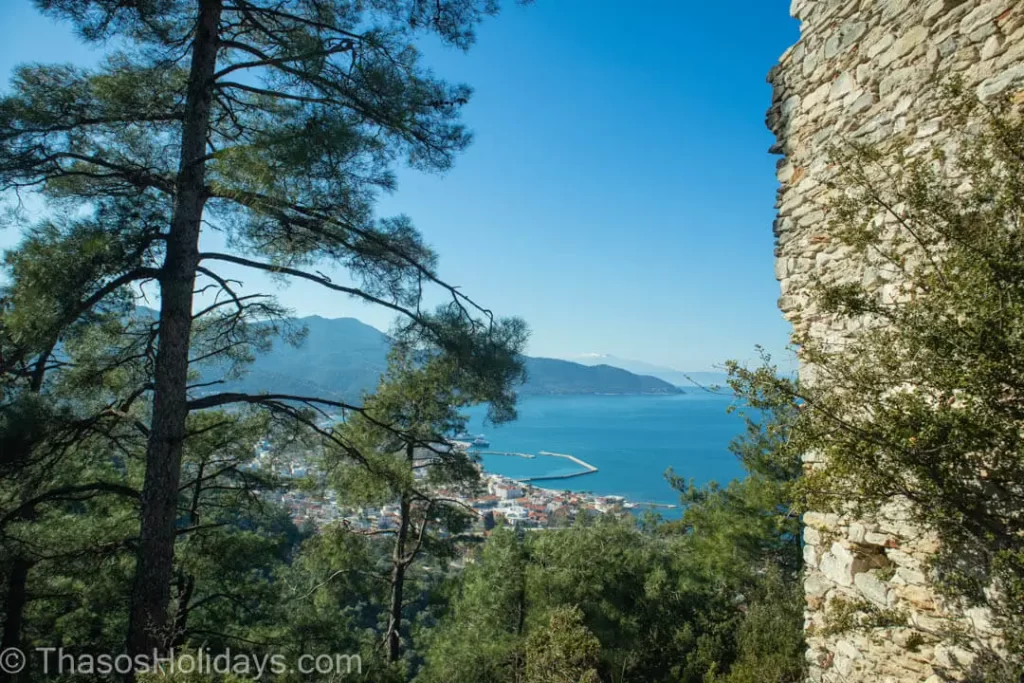
Thassos joins Greece
As the end of the century approaches, locals become more and more eager to join the free Greek state. Their efforts, however, lead to the island losing its autonomy at the beginning of the 20th century.
After Egypt becomes a British protectorate, the Turks grab the chance to reoccupy the island in 1901. However, their strength diminishes every year, only to lead to the island’s liberation on the 18th of October 1912 by the Greek fleet.
Essentially, in October 1912, during the First Balkan War, the Greek Navy showed up unannounced and effectively “adopted” Thassos into Greece. This ended over 350 years of Ottoman rule, not that the locals complained!
One year later, Thassos officially joins the Greek nation with the Bucharest Treaty in the August of 1913, 460 years after the fall of Constantinople.
One can imagine the celebration: after centuries of empire-hopping, Thassos was finally flying the blue-and-white flag of Greece.
Chapter 10: Life Under the Greek Flag
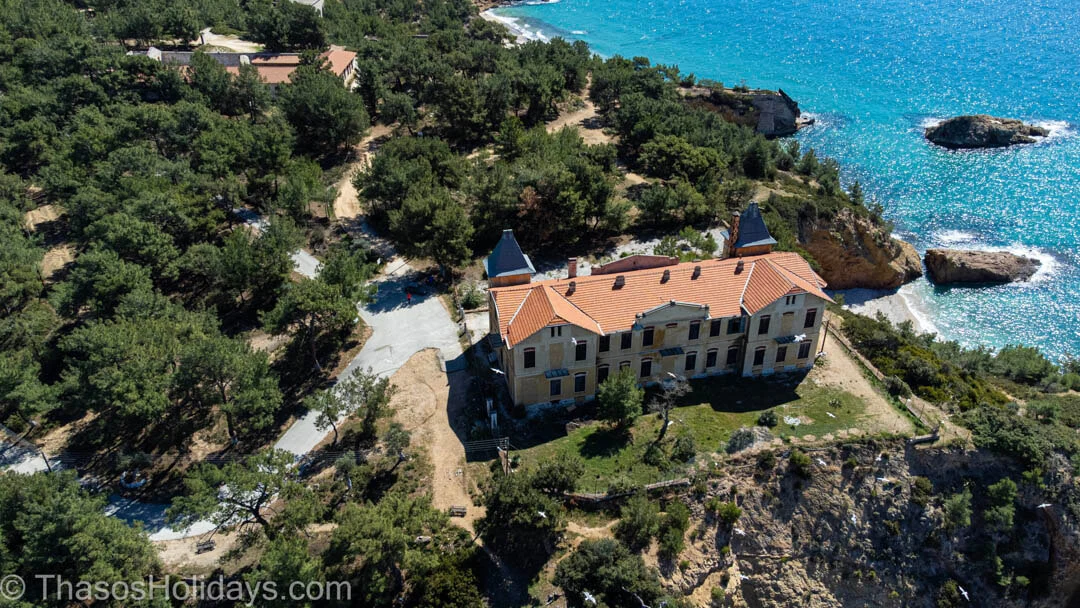
The Germans for the mines
Life under the Greek flag brought changes, especially in the economy. At the dawn of the 20th century, Thassos experienced a mining boom. A German entrepreneur, Friedrich Speidel, arrived in 1905 and discovered rich zinc and lead deposits near modern Limenaria.
Speidel built a grand office (the “Palataki” or “little palace”) and even rows of workers’ houses along the shore. Kastro, a mountain village, emptied out as folks rushed to Limenaria’s mines for work.
The mines churned out some 2 million tons of ore in the early 1900s, turning this quiet isle into a hive of industry.

Thassos in World War 1
World War I hit the pause button – mining stopped in 1914 when war broke out. They gave it another go in 1925, but the Great Depression’s crash in 1930 shut the mines down again.
Despite these ups and downs, Thassians kept busy with farming and fishing, and even welcomed new neighbors: after 1922, waves of Greek refugees from Asia Minor settled on Thassos, bringing new skills, foods, and σπίτι (home) recipes to the island.
This cultural infusion gave island life a boost – picture lively new communities and perhaps some friendly arguments over whose baklava is best.
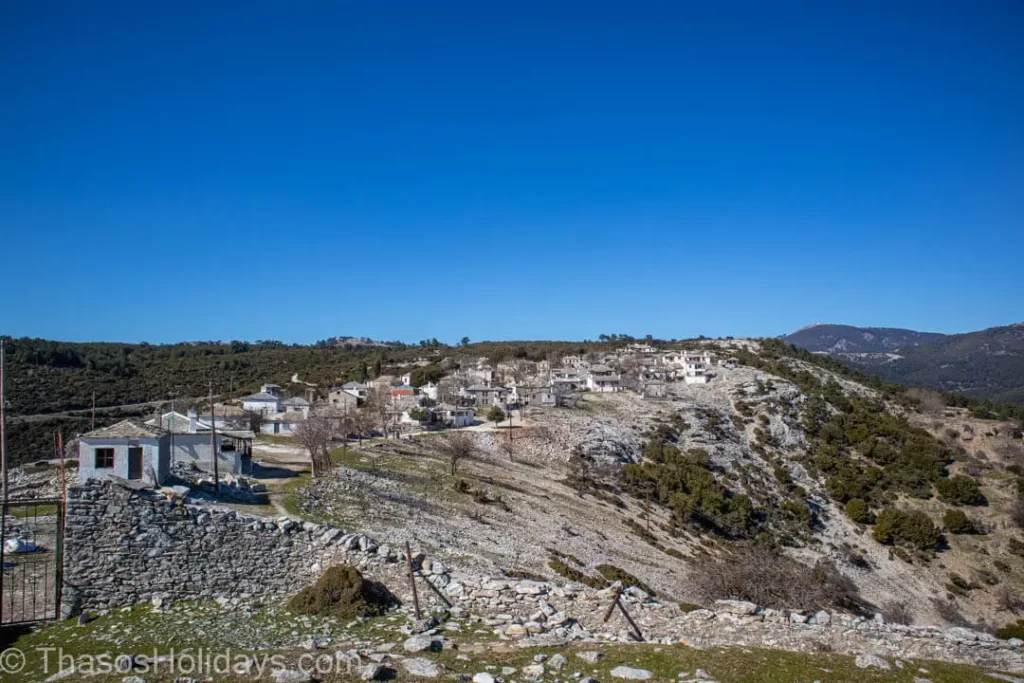
War, Occupation, and Resilience (1940s)
The 1940s brought storm clouds over Thassos – and not just the weather. During World War II, the island fell under Bulgarian occupation, part of the Axis grip on Greece. Locals suddenly found their schools shut down, their island renamed “Tasos,” and their culture under pressure.
But Thassians didn’t sit quietly. The rugged pine-covered mountains became a perfect base for resistance fighters, led largely by the EAM. Knowing every goat trail and hidden cove, they harassed the occupiers until the Bulgarians finally withdrew in 1944.
Freedom came, but peace didn’t last. Greece slid into civil war from 1946 to 1949, and Thassos once again became a battleground. Fighting dragged on here until 1950 – as if some fighters hadn’t realized the war was over. Only then could the island finally start to breathe again.
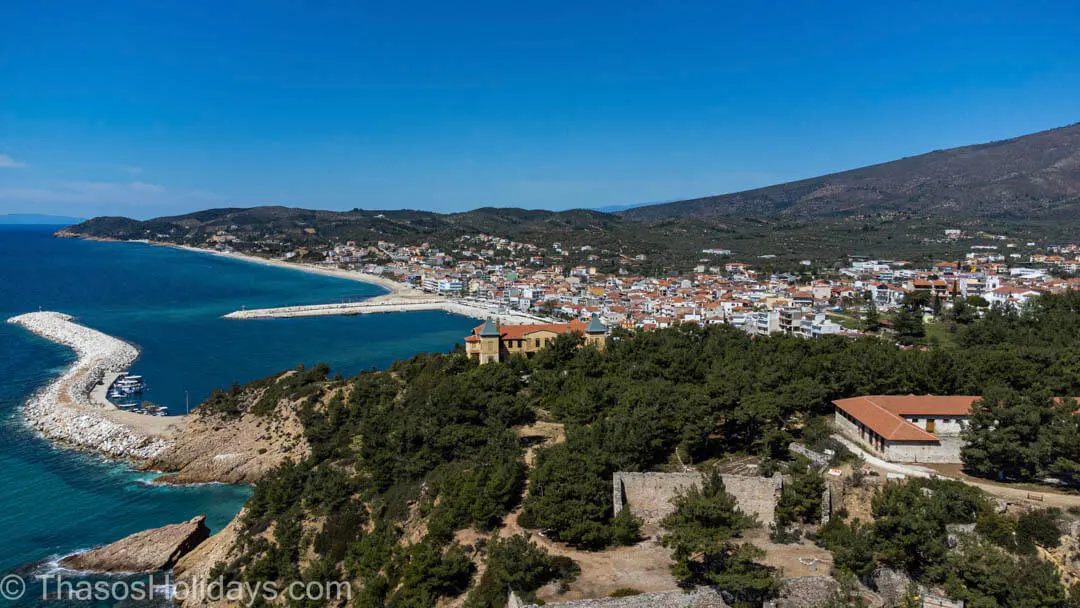
Recovery, Mining, and Moving Forward (1950s–1960s)
By the 1950s, Thassos was ready for a fresh chapter. In 1957, mining roared back to life in Limenaria, this time with iron ore bound for rebuilding post-war Europe. The revival brought jobs, growth, and even a cinema to the once-sleepy village.
By 1960, Limenaria had more residents than the island’s capital. The “Palataki” office, a remnant from the early mining days, stood proudly over the shoreline as a symbol of prosperity. For nearly a decade, the sounds of clanging metal and rumbling trucks filled the air.
But by 1963, the mines closed once again, and Thassos turned back to its timeless rhythms – olives, figs, bees, and the sea. A few adventurous travelers began to discover the island’s quiet beauty, planting the seeds of future tourism.
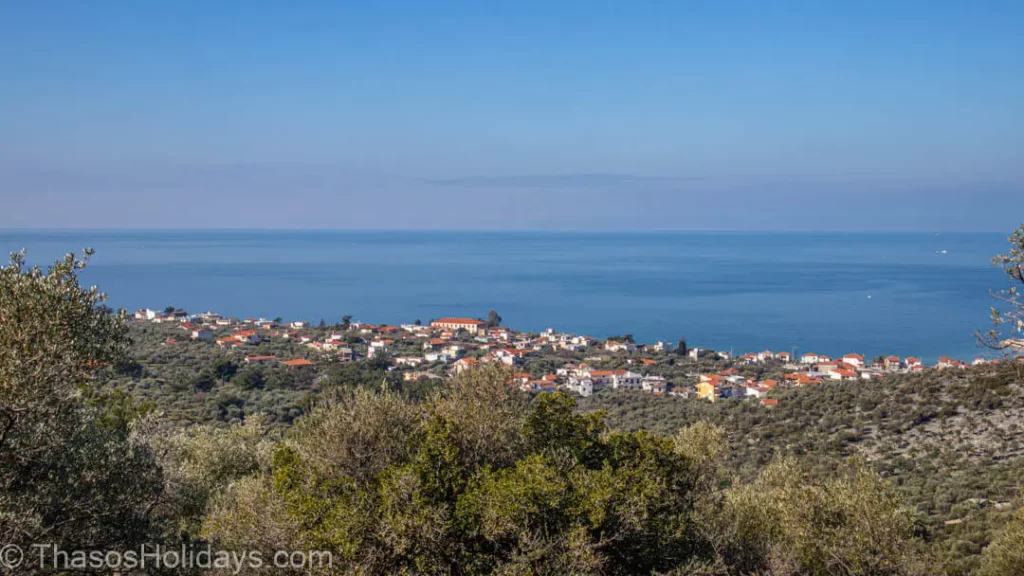
Tourist Boom and New Challenges (1970s–1990s)
The 1970s and 1980s marked Thassos’s debut as a rising star in Greek tourism. New roads, improved ferries, and postcard-perfect beaches drew more visitors each year. Villages like Golden Beach, Limenaria, and Potos saw hotels, tavernas, and cafes spring up along their shores.
Fishing boats doubled as tour boats, and stone houses became guest stays. The island’s charm remained, but now it was paired with the buzz of a summer holiday scene. Limenaria, once a mining hub, was now thriving on sunbathers and sightseers.
Then came the wildfires. In 1985, flames devoured over half of the island’s forests, leaving a scar that locals will never forget. Yet, like a phoenix, Thassos rebounded – replanting, regrowing, and welcoming back visitors who marveled at its green return by the 1990s.
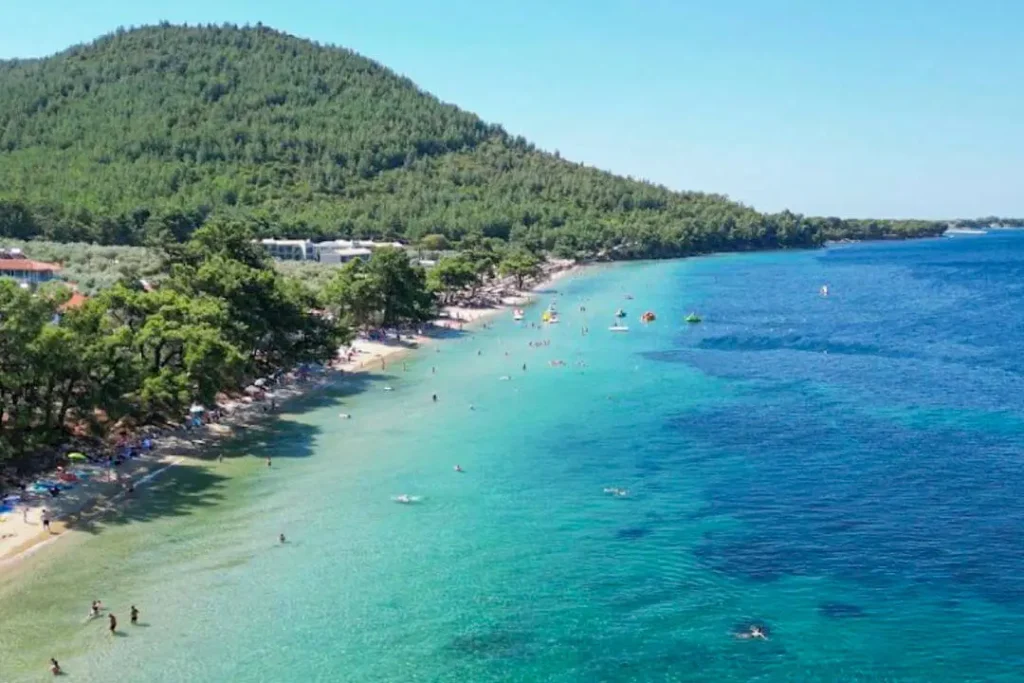
Thassos in the New Millennium (2000s–2025)
Today, tourism is the heartbeat of Thassos. The island draws visitors from across Europe, with Balkan travelers leading the summer crowds and northern Europeans preferring the quieter spring and autumn months. On any given promenade, you’ll hear a mix of languages alongside the clink of coffee cups.
Modern challenges have come and gone. The Greek financial crisis hit hard but didn’t break the tourist flow. Even the pandemic pause of 2020 was temporary – by 2022, ferries were full again, beaches busy, and life back to its sunny self.
Now, better roads, frequent ferries, and even direct summer flights from Belgrade make Thassos more connected than ever. Yet the island still offers the same gifts it always has – fresh olives and honey, crystal waters, ancient ruins, and a warm “Όλα καλά” from its people.
What do you think?
I hope you enjoyed this ultimate guide to Thassos history
Now, I’d like to hear from you: which phase of Thassos history do you love the most?
Would you like to live under prosperous Roman rule?
Or maybe you prefer the action and intrigue during the Athenian dominion.
Either way, let me know by leaving a quick comment below.
And if you like what you see, follow StayThassos on Facebook or share this post!
Remember, exploring Thassos history is among the Top 21 Reasons to visit Thassos!
If you’re convinced you should visit the island and explore its history, here is how to get to Thassos via air and ferry routes. And if you want to make that move a little bit more permanent, here is a guide to moving to Thassos!
You also want to be smart about the timing of your holidays, so check the Thassos weather patterns and the best time to visit the island.
My favorite times are late spring and early autumn, but you may also want to visit Thassos in winter.
Whichever season and time you arrive on the island, make sure to follow these 24 Thassos Travel Tips and avoid the following 20 common Thassos Travel mistakes.
And when you want to read something fun about the island during your holidays, here are 35 fun facts about Thassos.
If you want to show off your Thassos holidays on Instagram, visit the 20 most Instagrammable places in Thassos or these 22 off-the-beaten-path Thassos locations.
To look even cooler in your posts, remember to spice up your Instagram or Facebook feed with one of these 106 Captions and Quotes about Thassos.

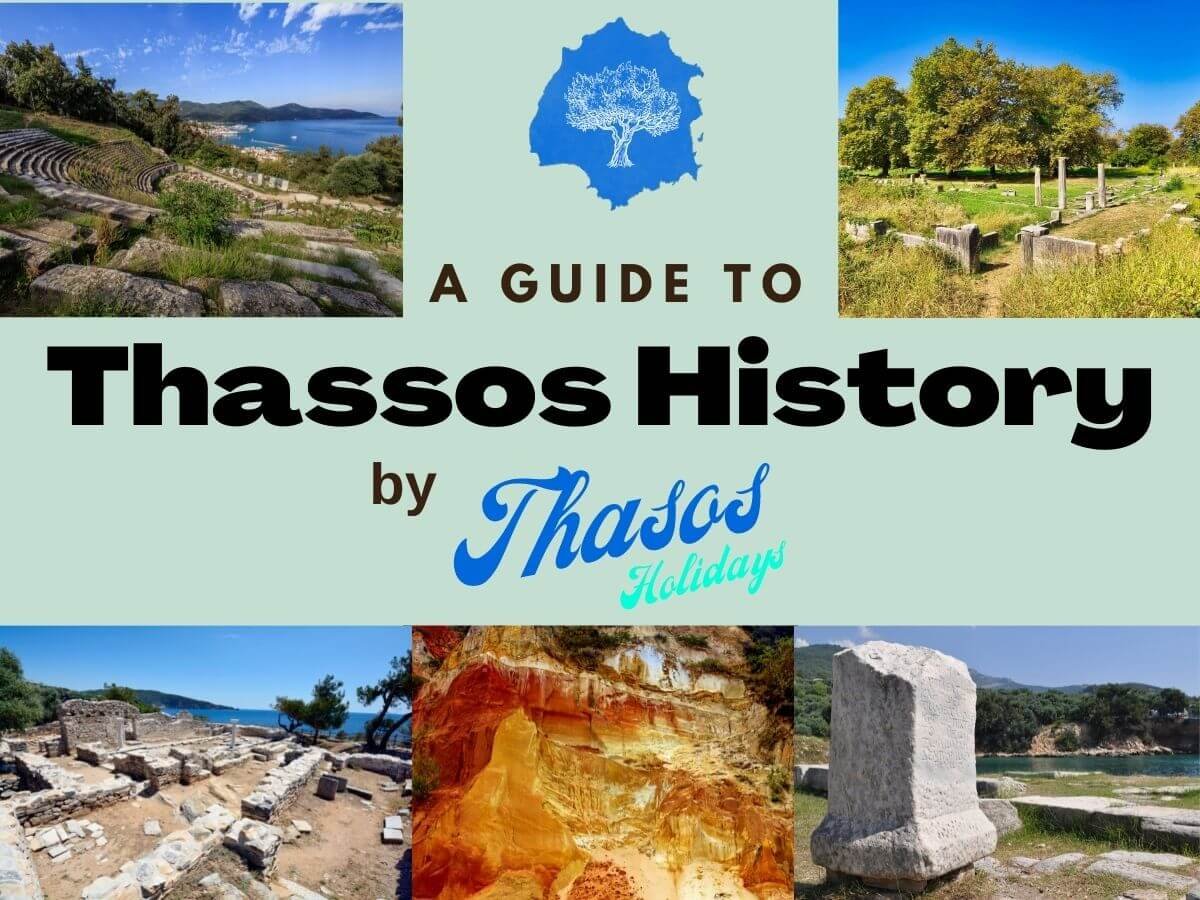






Outstanding story there.
Thank youuuu 🙂
WOW just what I was looking for. Thank you
You are welcome : )